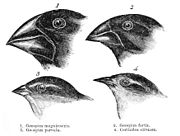타우 옥탄티스
Tau Octantis| 관찰 데이터 Epoch J2000.0EquinoxJ2000.0(ICRS) | |
|---|---|
| 콘스텔레이션 | 옥탄스 |
| 적경 | 23h 28m 03.7855s[1] |
| 적위 | -87°28°55.967°[1] |
| 겉보기 등급(V) | 5.50[2] |
| 특성. | |
| 스펙트럼형 | K2 III[3] |
| U-B 색지수 | +1.43[4] |
| B-V 색지수 | +1.27[4] |
| 아스트로메트리 | |
| 반지름 속도(Rv) | 31.0±1[5].4km/s |
| 고유운동(μ) | RA: +16.782 밀리초/년[1] Dec.: +11.957 밀리초/년[1] |
| 시차()) | 6.8009 ± 0.0574 mas[1] |
| 거리 | 480 ± 4y (표준 ± 1 pc) |
| 절대 등급(MV) | - 0.36[2] |
| 세부 사항 | |
| 덩어리 | 1.14[6] M☉ |
| 반지름 | 스물네[7] |
| 광도 | 223[8] L☉ |
| 표면 중력(log g) | 1.63gs[6] |
| 온도 | 4,422[8] K |
| 금속성 [Fe/H] | +0[9].12덱스 |
| 회전 속도(v sin i) | 1 km/s 미만[10] |
| 기타 명칭 | |
| 데이터베이스 참조 | |
| 심바디 | 데이터. |
옥탄티스자리 타우(, Octantis)는 남반구 옥탄스자리의 외로운[11] 별이다.겉보기 등급은 5.50으로 [2]육안으로 희미하게 볼 수 있다.이 물체는 480광년[1] 거리에 있지만 태양중심 반경 31km/[5]s의 속도로 멀어지고 있다.
옥탄티스자리 타우는 분광형 K2 III로 적색 거성임을 나타냅니다.질량은 태양의[6] 114%이지만 [8]밝기는 223배다.그러나 반지름이 24R로☉ 확대되면 유효온도가 4,422K로 [8]오렌지빛을 발한다.옥탄티스자리 타우는 철분 함량이 태양의 132%이며, 오래된 원반형 [9]종족에 속하는 것으로 추정됩니다.현재는 1km/[10]s 미만의 회전 속도로 회전하고 있다.
언급
- ^ a b c d e Brown, A. G. A.; et al. (Gaia collaboration) (2021). "Gaia Early Data Release 3: Summary of the contents and survey properties". Astronomy & Astrophysics. 649: A1. arXiv:2012.01533. Bibcode:2021A&A...649A...1G. doi:10.1051/0004-6361/202039657. S2CID 227254300. (에라타: doi:10.1051/0004-6361/202039657e).VizieR에서 이 소스에 대한 Gaia EDR3 레코드.
- ^ a b c Anderson, E.; Francis, Ch. (May 2012). "XHIP: An extended hipparcos compilation". Astronomy Letters. 38 (5): 331–346. arXiv:1108.4971. Bibcode:2012AstL...38..331A. doi:10.1134/S1063773712050015. ISSN 1063-7737.
- ^ Houk, N.; Cowley, A. P. (1975). University of Michigan Catalogue of two-dimensional spectral types for the HD stars. Volume I. Declinations -90_ to -53_ƒ0. Bibcode:1975mcts.book.....H.
- ^ a b Johnson, H. L.; Mitchell, R. I.; Iriarte, B.; Wisniewski, W. Z. (1966). "UBVRIJKL Photometry of the Bright Stars". Communications of the Lunar and Planetary Laboratory. 4: 99–110. Bibcode:1966CoLPL...4...99J.
- ^ a b Gontcharov, G. A. (November 2006). "Pulkovo Compilation of Radial Velocities for 35 495 Hipparcos stars in a common system". Astronomy Letters. 32 (11): 759–771. arXiv:1606.08053. Bibcode:2006AstL...32..759G. doi:10.1134/S1063773706110065. eISSN 1562-6873. ISSN 1063-7737. S2CID 119231169.
- ^ a b c Anders, F.; et al. (August 2019). "Photo-astrometric distances, extinctions, and astrophysical parameters for Gaia DR2 stars brighter than G = 18". Astronomy & Astrophysics. 628: A94. arXiv:1904.11302. Bibcode:2019A&A...628A..94A. doi:10.1051/0004-6361/201935765. ISSN 0004-6361.
- ^ Stassun, Keivan G.; et al. (9 September 2019). "The Revised TESS Input Catalog and Candidate Target List". The Astronomical Journal. 158 (4): 138. arXiv:1905.10694. Bibcode:2019AJ....158..138S. doi:10.3847/1538-3881/ab3467. ISSN 0004-6256.
- ^ a b c d McDonald, I.; Zijlstra, A. A.; Boyer, M. L. (21 November 2012). "Fundamental parameters and infrared excesses of Hipparcos stars: Parameters and IR excesses from Hipparcos". Monthly Notices of the Royal Astronomical Society. 427 (1): 343–357. arXiv:1208.2037. Bibcode:2012MNRAS.427..343M. doi:10.1111/j.1365-2966.2012.21873.x. ISSN 0035-8711.
- ^ a b Eggen, O. J. (July 1993). "Evolved GK stars near the sun. I - The old disk population". The Astronomical Journal. 106: 80. Bibcode:1993AJ....106...80E.
- ^ a b De Medeiros, J. R.; Alves, S.; Udry, S.; Andersen, J.; Nordström, B.; Mayor, M. (January 2014). "A catalog of rotational and radial velocities for evolved stars: V. Southern stars⋆⋆⋆". Astronomy & Astrophysics. 561: A126. arXiv:1312.3474. Bibcode:2014A&A...561A.126D. doi:10.1051/0004-6361/201220762. ISSN 0004-6361.
- ^ Eggleton, P. P.; Tokovinin, A. A. (3 September 2008). "A catalogue of multiplicity among bright stellar systems". Monthly Notices of the Royal Astronomical Society. 389 (2): 869–879. arXiv:0806.2878. Bibcode:2008MNRAS.389..869E. doi:10.1111/j.1365-2966.2008.13596.x. S2CID 14878976.



